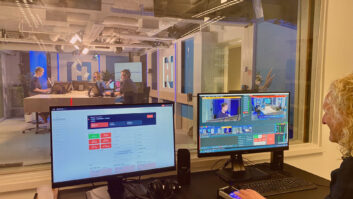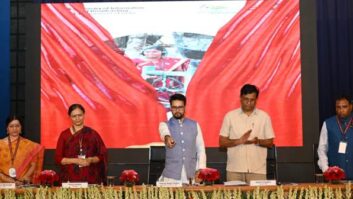The author is membership program director of the National Federation of Community Broadcasters. NFCB commentaries are featured regularly at www.radioworld.com.
April 21–28 is High School Radio Week, a wonderful opportunity to recognize and celebrate radio stations based in educational institutions. For community radio stations, High School Radio Week should also be utilized as a time to consider how your station is engaging the next generation of leaders.

High school stations are a valuable part of noncommercial radio’s future. Like the fantastic college radio space, high school radio is an avenue for young people to gain media literacy knowledge, production chops and personal skills that will benefit them years later. Sadly, few high schools and school districts have noncommercial educational licenses. Such an observation only reminds us how precious our high school stations are in this moment. Whether you’ve watched the many high school walkouts or witnessed the ascendance of students as newsmakers in the media, the potency of youth voices today is truly powerful.
Are you with a high school radio station, or have one in your community? You can still join in on festivities for National High School Radio Week. A nationwide broadcast emanating out of Auburn Hills, Mich., is among the many events coming up.
Fortunately enough, where we may lack in high school outlets, community radio has oftentimes stepped in to be a venue for the next generation. Is your community radio station like a WGDR(FM) or KDNK(FM), with its own youth programs? Have you ever considered pairing off with local schools? Community radio stations that engage young people soon recognize their own efforts to create time for students can be transformative.
Community radio involves young people in many ways. For example, WOWD(LP) has hosted after-school radio classes for students. Many other stations welcome youth to do radio programming and podcasts. Perhaps the best-known initiative is Youth Radio, the Oakland-based institution that used its humble beginnings to build a respected organization where young people get media opportunities to which they’d never otherwise have access.
Without a doubt, radio experience can end up on a student’s first résumé and help show to a potential employer their ability to manage and accomplish objectives. In addition, the intangible skills students learn are considerable. These subtle lessons are worthy of community radio to consider when measuring impact.
As a program director, I led up many youth radio endeavors. I found that, beyond the time in front of microphones, the most essential experiences were away from the studio. The development of an idea, processing feedback, working with groups, cultivating one’s own communication style, and seeing a project through were new opportunities for most students outside of the academic setting. For many, these instances prepared them for the working world and helped them find the resources within themselves to articulate their vision. Several young people built their confidence in these productions. The shy ones learned to speak up. The youth who were the first to speak got a deeper appreciation for the art of listening. Such intersections inevitably changed their lives, and mine.
[Read: Community Broadcaster: Why Training Matters]
Community media offers many excellent turns for students to receive mentorship. Doing so effectively requires some attention to details — a culture that supports learning, policies that give parents assurances their children are in a safe and equitable environment, and organizational capacity that is married to the idea that students are a benefit to the organization rather than a burden. Then cementing that work with a commitment from all sectors of the station offers a chance for such programs to last.
I have found inspiration in efforts like the Online News Association Journalism Mentorship Collaborative, an effort connecting students with independent newsrooms. While ONA sweetened the pot by providing grant funding for organizations, the kernel of this idea — one where media groups can together forge a more inclusive future for youth – is something everyone can embrace.
High School Radio Week is a joyful time to salute young media makers. It may also provide time to recognize the community radio stations involved with youth productions. And finally may it be a time for community radio yet to engage students to take the leap and link up with schools and other institutions to offer a once-in-a-lifetime opportunity for a student to grow.











